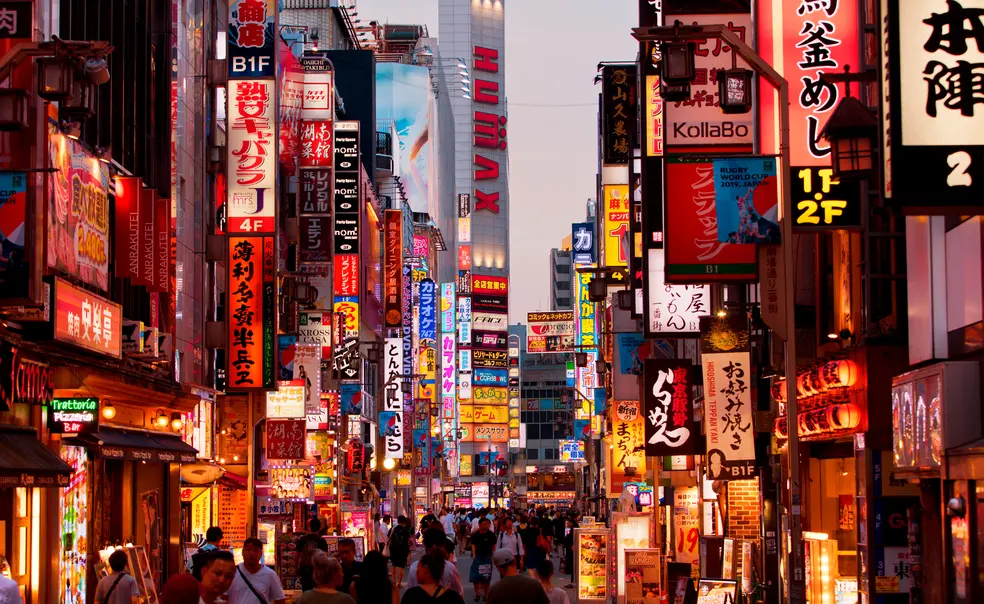Five Ways to Discover the Real Tokyo
As Japan floods with tourists seeking out the global best in cuisine, cocktails, and culture, Tokyo expert Tom Downey ’95 poses a strategy for getting away from the crowds
In the opening pages of John McPhee ’53’s A Sense of Where You Are, McPhee’s father, a legendary sports physician, summons his son home to Princeton for the chance to see a player who “may be one of the best ever” at a freshman basketball game. As alumni readers well know, to contend that one of the best players ever might be lacing up for a frosh game seemed the stuff of fantasy. But that freshman (Bill Bradley ’65, of course) went on to win two NBA championships — and three Senate races. I thought of that moment when, back in 2008 or so, I first started to taste Neapolitan-style pizza, French haute cuisine, and other great foods of the world — in Japan — then proclaimed to everyone I knew that Japan had become the place in the world to find the best food, drinks, craft, and culture. Of course it was the best for all things Japanese, but back then the idea that an isolated Pacific nation might also offer the best of nearly everything in the world was about as farfetched as a Princeton freshman squad member being one of the greatest athletes of all time.
In these last few years, as that recognition of Japanese excellence has spread around the globe, a tidal wave of tourists has swept across Japan, flooding first Tokyo and Kyoto, then Osaka, and now engulfing many lesser-known places throughout the land. On my last visit to Tokyo — one of dozens in the last 20 years — two foreign visitor friends frantically messaged me from Uogashi Fukuchan No. 2 where we were meant to meet that night. They’d arrived a few minutes early, gotten in line behind a half-dozen locals, when the proprietor came up to them with a handprinted sign that read, in English, “You can only eat here if you speak Japanese.” This was not some Insta-famous boite. It was a tiny, standing-room-only sashimi joint in Shibuya that could barely fit eight salarymen. In a decade of eating and drinking there, I’d never even spotted a fellow foreigner. I spoke enough Japanese to get by, but the effect was chilling.
What’s a traveler to do who wants to see Tokyo — and experience some of what makes Japan the best — but also not be surrounded by fellow gaijin (foreigners)?
For years, to solve that problem, I would just dig deeper into my personal stockpile of what I considered Tokyo’s best. If the sushi joint I loved had become a tourist trap, then there had to be a noodle maker, a curry house, or a cocktail bar that had yet to be exposed to the world. And, once upon a time, specific recommendations for lesser-known and ever more obscure bars, restaurants, sights, or neighborhoods had worked. But, these days, that’s all changed: The massive spike in tourism coupled with the instant spread of information means nothing can stay secret for long. What a visitor needs, then, isn’t so much a laundry list of destinations, but a strategy to go deeper into this city. I’m not advising that visitors avoid all of the typical tourist haunts — Tonki, Ginza Lion, Shima, and such remain classics for a reason. I just don’t need to tell you about them. Here’s what I will tell you:
Don’t restrict yourself to “the global best”
What remains to be discovered in Tokyo if this quest for the best isn’t enough? Start by understanding why the best in Japan just isn’t that interesting anymore: It’s not only that these places are overwhelmed with foreigners and that certain Tokyo locales now feel more like Bushwick than Bushwick, New York, itself. There’s something else at work. The rest of the world is starting to look more and more like Japan.
Fifteen or 20 years ago many of these Japanese masters had what was then a very unique approach to their crafts. Take pizza. What was then my favorite pie in the world, at Seirinkan in Naka Meguro, was made by a pizzaiolo who had spent a couple of years in Naples unable to penetrate the insular world of Italian pizzamakers and land even an internship at a local pizzeria. What he did instead, while in Naples for two years, was eat so many pies and observe so much doughmaking and shaping that when he finally returned home to Japan, thousands of pizzas later, he could craft an extraordinary pie. His pizza was as much a leap of the imagination as an act of imitation.
In subsequent years this very Japanese notion of focus, imitation, and imagination spread around the world. Japanese chefs, clothing designers, and craftspeople were celebrated by the global artisanal elite — and by international companies and conglomerates. They started working at the most renowned restaurants in the world. They spread their vision far and wide. In the span of just a few years this concentration of the best, which was once so evident in Japan, started to disperse. The rest of the world started to look more like Japan (think cocktail culture, counter dining, the omakase experience). Japan, and especially its elite restaurants, stores, bars, and galleries, also started to look more like the rest of the world.
I’ve relied heavily on examples of foreign cuisine in Japan so far, but the same holds true for Japanese food, craft, and many kinds of culture: Whereas a decade ago, things like ultra-premium sushi, Japanese craft cocktails, fine denim, handmade soba, regional pottery, or artisanal sake were almost impossible to come by outside of Japan, that’s no longer the case. I would challenge anyone (not a sushi expert) to blind taste the best sushi in New York or Los Angeles next to Tokyo’s finest and be able to tell the difference. Superlative cuisine, craft, or even culture alone, in my opinion, isn’t worth your time or your money if you can find its equivalent at home. You need to find a kind of place you can’t find anywhere but Japan.
Lean into nostalgia
I most want to return to the Japanese places that are acts of singular imagination, of nostalgia for a time, place, and feeling the creators may never even have experienced themselves, before this great global homogeneity began to envelope us all. I don’t want to visit the greatest French restaurant in the world in Tokyo anymore. I want a place, like Brasserie Gus in Kagurazaka, that feels like a masterful performance of some kind of A.J. Lieblingesque vision of post-war Paris, complete with stern chef, peeling posters, and classic food of the purest provenance. I want a French fever dream of the kind French people no longer have, but that Japanese of a certain age can build an entire universe around.
Grab a cup of coffee
Try kissaten and tachinomi, two old-school Japanese institutions that have yet to spread around the world. (Just wait!) Kissaten are coffee shops, but a very particular kind. They are typically tiny, usually staffed by just one aged person or couple, serve only drip or maybe pourover coffee, and offer some small dishes, like toast, boiled eggs, sometimes a lunch plate. The best, to me, are also guided by some kind of strange fantasy. Take Peshawar, near Tokyo station, which you would think would be devoted to an obscure region of Pakistan but in fact celebrates a Japanese poet who once wrote about that faraway place. They also offer an extraordinary Mont Blanc, a kind of French chestnut dessert that is much more popular in Tokyo than in Paris.
Look for “third places”
Tachinomi are standing bars. There are no seats. Just a bar counter, a proprietor behind it, drinks and food to go with the drinks. They range from seedy to sublime. They sometimes specialize in one drink or dish or cuisine. Most foreigners don’t see the point of standing in these small, crowded spaces. Ignore most foreigners. Tachinomi have been real, after-work “third places” for generations of Japanese. Their clientele was once mostly men, but now also includes women and some younger people who are fascinated by their nostalgic appeal. These are popular places in the European sense of the word, accessible to everyone, and they embody the interesting fact that Japan has one of the flattest, least class-stratified societies in the world. They are often located near train stations, often underground, and are cramped, intimate even. After you take a breath and plunge into what looks like an intimidating space, they are also quite welcoming to everyone, even foreigners.
These are institutions that exist in or near most Tokyo neighborhoods you’ll probably stay in. With luck, you’ll find someone in there who speaks a little English and can steer you to other places in the neighborhood. If you’ve found a kissaten or tachinomi guided by a particular idea, obsession, or passion, then when you ask its owner or customers about other places they love, they will hopefully guide you to like-minded institutions. Those are where I want to go. Places that may not be “the best” in the most all-encompassing sense of that term but, for me, right now, are the best I can find when visiting Tokyo.
Learn a little Japanese
In a place only recently swamped with tourists, many of whom are clueless about local customs, culture, and cuisine, speaking even a tiny bit of Japanese goes a long way in demonstrating that you are different than the tourist masses — and worthy of a bar seat, a dining table, or even a couple of square feet of standing room. Sure, this is a kind of virtue signaling, but in a country where waiters, bartenders, shop clerks, and hotel staff now often feel overwhelmed and intimidated by a massive influx of visitors who know little about this nation, showing that you are attempting to get accustomed to local ways doesn’t just help you as a visitor, it shows respect to the locals.












No responses yet